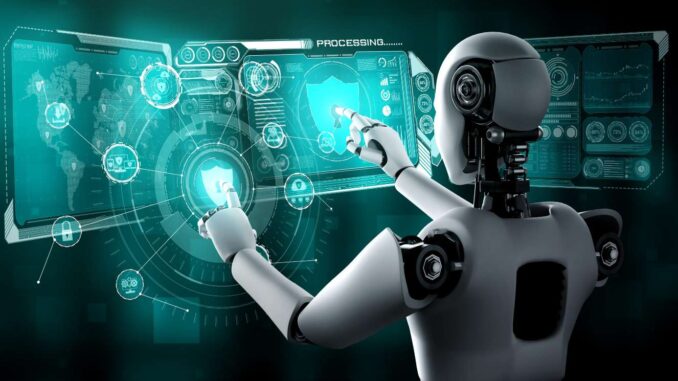
Human-AI collaboration refers to the partnership between human beings and artificial intelligence systems to accomplish tasks, solve problems, and enhance decision-making processes.
This collaboration leverages the strengths of both humans and AI to achieve outcomes that neither could achieve alone. Here are some key aspects of human-AI collaboration:











### 1. **Complementary Strengths – **Humans**: Posess critical thinking, emotional intelligence, creativity, and ethical judgment.
– **AI**: Excels in processing large volumes of data, performing complex calculations, recognizing patterns, and automating repetitive tasks.
### 2. **Applications**:
– **Healthcare**: AI systems assist doctors in diagnosing diseases based on medical imaging and patient data, while doctors provide the contextual understanding and empathy required for patient care.
– **Finance**: AI can analyze market trends and predict stock prices, while human analysts provide insights based on qualitative factors, such as geopolitical events.
– **Manufacturing**: AI can optimize supply chain logistics and automate processes, while human workers focus on quality control and strategic planning.
### 3. **Enhancing Decision-Making**:
– AI can provide data-driven recommendations, and humans can weigh those recommendations against ethical considerations, stakeholder impact, and long-term implications.
### 4. **Competitive Advantage**:
– Organizations that effectively leverage human-AI collaboration may experience increased productivity, innovation, and market responsiveness.
### 5. **Challenges**:
– **Trust**: Humans need to trust AI systems to rely on their insights and recommendations.
– **Bias**: AI systems can inadvertently perpetuate biases present in training data, which requires careful oversight from human collaborators.
– **Job Displacement**: Concerns exist regarding automation and the potential displacement of jobs, making it essential to re-assess job roles and re-skill workers.
### 6. **Future of Work**:
– The way humans and AI work together is expected to evolve, emphasizing the need for training programs that help workers develop skills to effectively collaborate with AI systems.
### 7. **Ethical Considerations**:
– There are important ethical dimensions to consider, such as ensuring transparency in AI systems, maintaining accountability for decisions influenced by AI, and safeguarding user privacy.
### Best Practices for Effective Human-AI Collaboration:
– **Training and Education**: Ensuring that workers understand how to use AI tools effectively and ethically.
– **Interdisciplinary Teams**: Combining expertise from various fields to create robust AI applications.
– **User-Centric Design**: Developing AI systems with input from potential users to ensure they meet real-world needs.
Human-AI collaboration represents a transformative shift in how we approach problem-solving and productivity across various sectors. By harnessing the strengths of both humans and AI, organizations can create synergies that lead to enhanced creativity, efficiency, and innovation.


Leave a Reply